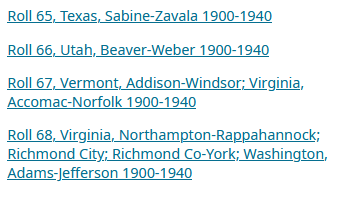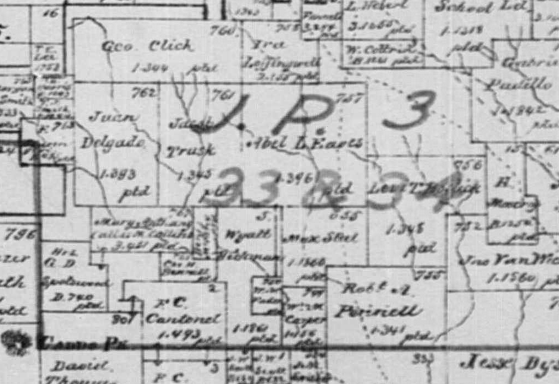Enumeration District???
You have probably noticed a line in the heading of some census documents for Enumeration District. Even though they weren’t labeled, they have been around since the first census in 1790. The enumeration district was the area that an enumerator, the person recording information for the census, stayed within when recording census information. Since the government wanted to record the information in a short period of time, most enumerators had one district.
Census Pay Districts
The earliest district descriptions we have are from 1830. These descriptions are actually pay records for the enumerators and range from not worth much to an exact description of the district. It depended on the person filling out the form and you will need to look for your district to find how valuable it is or is not. These descriptions can be found at FamilySearch
To find them, go to their site, log in (or create a free account), go to the Search tab at the top of the page and drop down to Catalog. When you see the search box select search by Keyword. Then enter this exactly (without the quotes), “Census descriptions of geographic subdivisions and enumeration districts.” You can also click here. These records are not indexed and not every district is included. Sometimes whole states are missing because the records were not saved. But sometimes the descriptions can be very good, like the one below for Washington D.C.

Enumeration Maps
After 1900 things are a little better. Many of the actual maps have been saved and are digitized. They are not indexed, but they are in alphabetical order by year, so they are pretty easy to find. Although most counties in the United States are represented, not every decade for every county is available.
To access these records, go back to FamilySearch click on the search tab and slide down to records. Towards the bottom of the page will be a section called “Find a Collection.” In the search box type in United State Census.

As you are typing a box will appear with all the U.S. census collections. Scroll to the bottom of the list and select United States, Enumeration District Maps … This will take you to the home page for this collection. Click on Browse all _____ images. The next page will give you a list of all the states and territories (click here). Find the state and county you are looking for and click on that collection. Then browse through the images until you find your county.

When these maps were created the census supervisors used any map that was available to them. Sometimes they were road maps or county maps, sometimes, if you are lucky, they used platt maps, so you can see who the property owners were. Then they drew the boundaries of the enumeration districts. Look closely because they often were drawn in pencil and can be hard to see.
1950
If you are looking for enumeration maps for the 1950 census, FamilySearch has not added those to their collection yet. You can find those at the National Archives website. Go to the Enumeration District and Related Maps page and search for the county you are interested in, typing in your State, County in the search box.
While the Enumeration District Maps won’t give you your ancestor’s exact address, they can help you find the area where they lived. You can then use that information to find the closest large town, the type of terrain they lived on, identify cemeteries and quarries on a topographic map, and other information that will tell you about their daily lives.
Want to share this information in detail with members of your group? Heroes of the Past presents programs to groups across the country. Contact us today to schedule yours!
We’d love to know what you think! Please leave a comment below.
Subscribe to this blog by filling out this simple form: